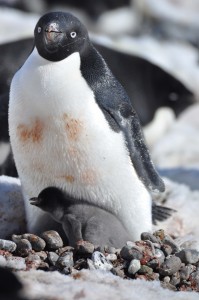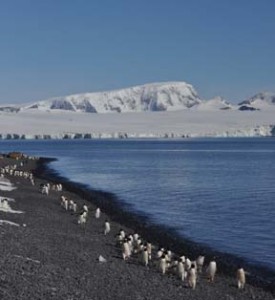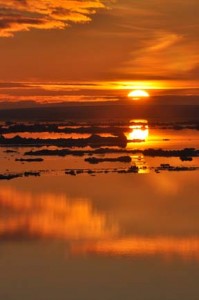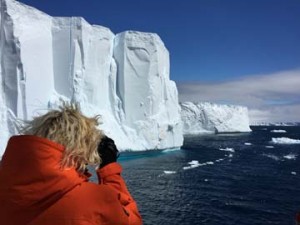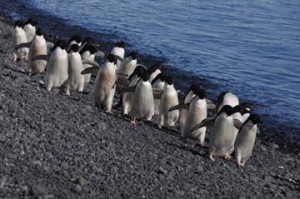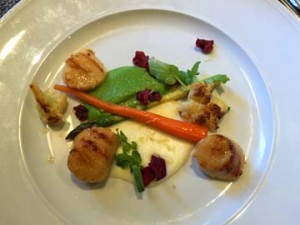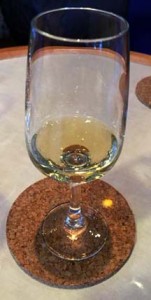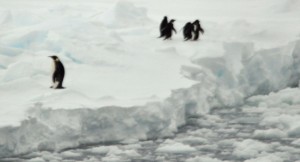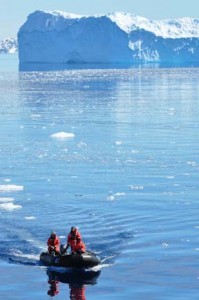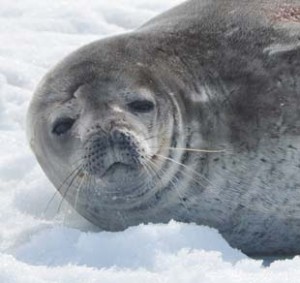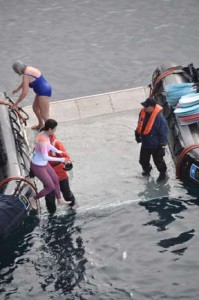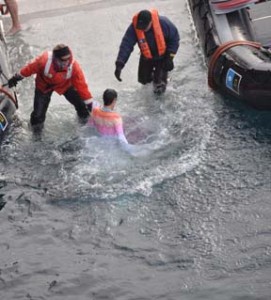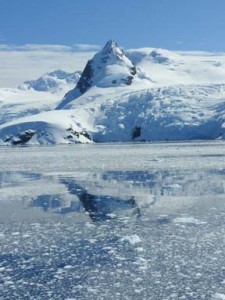Apparently this will NOT be a smooth travel day. Skytrain is down at Miami International Airport, reports my beloved Miami Herald. And Travel Mole says flight delays have created chaos in Lapland. Hope it doesn’t mess up Santa’s big night! (Do reindeer need an airport?)
Monthly Archives: December 2015
Return from Antartica’s Big Ice
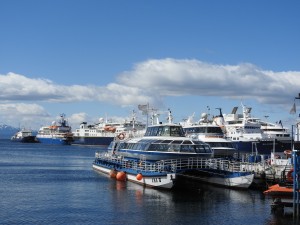 Ushuaia appeared on the Beagle Channel, calm and lulling. Our trip ended where as all such trips should: late at night, in a raucous Irish bar.
Ushuaia appeared on the Beagle Channel, calm and lulling. Our trip ended where as all such trips should: late at night, in a raucous Irish bar.
It was barely fortification for the day to come. We know now why penguins don’t fly. And while that’s a bad joke, so was the two-hour wait in line for the sole person working the security computer at the Ushuaia airport and the additional two-hour line for check in at American Airlines in Buenos Aires, for which there is no excuse. If executives and board members had to suffer the long queues, insufficiently staffed counters and hard seats in coach that their customers are tortured with, American — and other companies — would clean up their act. It ought to be written into the FAA code.
If there was one rosy side to the frustration, it was the attention it diverted from parting with new friends. Most of those you meet along the way are simply bypassers, but a few strike close to your soul. We hope to see you again on the next journey into the unknown.
More scenes from Antarctica
Sailing Antarctica’s Iceberg Alley
One hundred feet tall, two hundred beneath the sea, the massive “cubes” that are the remnants of a massive ice shelf-turned-berg called B15 bob along the Antarctic Sound. Once 160 miles long and 40 wide, the berg has diminished over 14 years courtesy of wind and water. Remaining still are these bobbing cubes and a single impressive stretch measuring more than 10 miles long. Soon it will be even smaller yet, pierced by blue crevasses and scarred by the ravages of cold and current. How this slice has even worked its way into this narrow stretch of Iceberg Alley is a mystery. Says the captain, “It’s like trying to wallpaper your apartment through a keyhole.”
Antarctic cycle of life
We wake to a bathtub ocean beneath a Brown Bluff, a volcanic ridge sheltering a sensitive Adele penguin colony. Hundreds of Adeles zip through the water, zipping in and out of the sea like porpoises, with the same splendid grace in water that they so sorely lack on land. At the water’s edge, battalions of black and white, march to and fro, neurotically debating whether to go into the sea – necessary if they want to eat – or whether to simply keep waddling nervously along.
Eventually, for most, hunger wins out, and they dip into the sea for a fish meal that they will ingest and then prepare as fuel for new-born chicks. Here there are many – some so new that they peck their way out of their shells as we watch. One parent closely guards the baby against a skua whose attempts to snag an egg or chick are foiled. If we have to leave, this is a splendid last stop on the White Continent.
Antarctica: Favorable winds
 The winds have packed the ice in the Weddell Sea, making progress toward the emperor penguin colony impossible. We turn and sail instead into a gloomy afternoon. The weather turns, as it often does here, and soon we are again swimming in a vast and limpid sea beneath a clarion canopy. The orange light of the midnight sunset spills into a rosy glow. We sleep.
The winds have packed the ice in the Weddell Sea, making progress toward the emperor penguin colony impossible. We turn and sail instead into a gloomy afternoon. The weather turns, as it often does here, and soon we are again swimming in a vast and limpid sea beneath a clarion canopy. The orange light of the midnight sunset spills into a rosy glow. We sleep.
Antarctica, with comforts
Antarctica: An emperor (penguin) comes to visit
“Good morning Ladies and Gentlemen, good morning.”
During the night, we’ve entered the Weddell Sea. The usual morning greeting, from expedition leader Lisa Kelley, comes at 6:30 – earlier than planned. An emperor penguin has been spotted on the ice. It’s unusual this far north, but it’s early in the season, and in this atypically heavy season for ice, we’ve been afford this rare pleasure. “It’s not something you get on every sailing,” says naturalist Eric Guth. Camera shutters whir around us, snapping madly.
The emperor belly flops and toboggans a dozen feet to a group of Adele penguins. Intimidated, they immediately march off out of sight.
It’s a double treat. No sooner have we moved indoors and settled in with coffee then a second emperor is spotted. This one is far closer to the ship, and we’re able to grab photos of his (or her?) head, its eye patch rimmed in yellow. Like other penguins, the emperor colonizes for nesting, but before and after the season they often roam independently – solo travelers on a fish-eating mission. Because its gestation period last so long, emperors lay their eggs in mid-winter; by this part of the summer, their chicks can be left on their own while parents go off to feed.
A thousand images later, the ship sails deeper into the Weddell Sea. A pair of little Adele penguins flap their arms as we steam past their ice floe, as if signaling our path forward. The wind pops up, and they flop onto their bellies. The flurries begin.
Just as lunch approaches, and the jackets and gloves have gone back to their drawyers, Lisa’s mellifluous voice rings through the speakers. A leopard seal has been spotted up ahead. Time to grab the camera.
Taking the plunge, Antarctica style
The days are governed by skies, wind, ice and yet another splendid meal. A stunning clear morning is prime time for zodiac cruises around a glacier-rimmed bay,
past see-through arches carved in blue ice and confetti-like cubes strewn across the water. An unexpected apparition appears on the horizon: a Viking boat manned by two spike-helmeted Hagars. Patrik, the Swedish hotel manager, has arrived to serve us a surprise potion of hot chocolate, laced with a choice of schnapps or whiskey.
The fine weather continues; by afternoon, the temps have reached the 40s – too warm even for our fake-fur-lined parkas. Down-style jackets offer enough warmth for an hour of kayaking around the windless bay, trying to catch a photo of porpoising penguins and going close as we dare to the cerulean berg that oddly resembles the Grand Canyon. There’s time still for a visit to an old whaling station, long commandeered by wildlife. Gentoo penguins march along paths in the snow
from rookery to sea. The occasional skua lands in a rookery, trying to snag an egg. The penguins squawk madly and close ranks. A pod of Weddell seals snooze near the coast.
This fine afternoon, our expedition leader decides, is the perfect opportunity for the polar plunge. This is exactly what it sounds like – a leap into the frigid sea. The adventurous and foolish gather in the mud room – our usual staging place for Zodiac tours and shore visits – but this time without any clothing heavier than bathrobes. The appropriate attire for a plunge is a matter of individual choice; some are in shorts and Ts, others in bathing suits. The previous cruise, we learn, a guest has gone into the water in his tighty whities … a vision alarming enough to cause staff amazement weeks later.
The mud room has turned into a dance party of sorts. Patrik, the hotel manager, has revved up the tunes. The line to the kayaking platform from which we will plunge moves quickly, leaving little time for second thoughts. Down the steps, off the edge, into the sea – YOW! – and you’re quickly pulled out, then wrapped in a towel by the ship’s doctor, who stays close at hand.
Unlike the usual cold-weather swim when the water is warmer than air, in this case the water is at 30 degrees, with the air somewhat warmer. A shot of schnapps resets the circulation.


